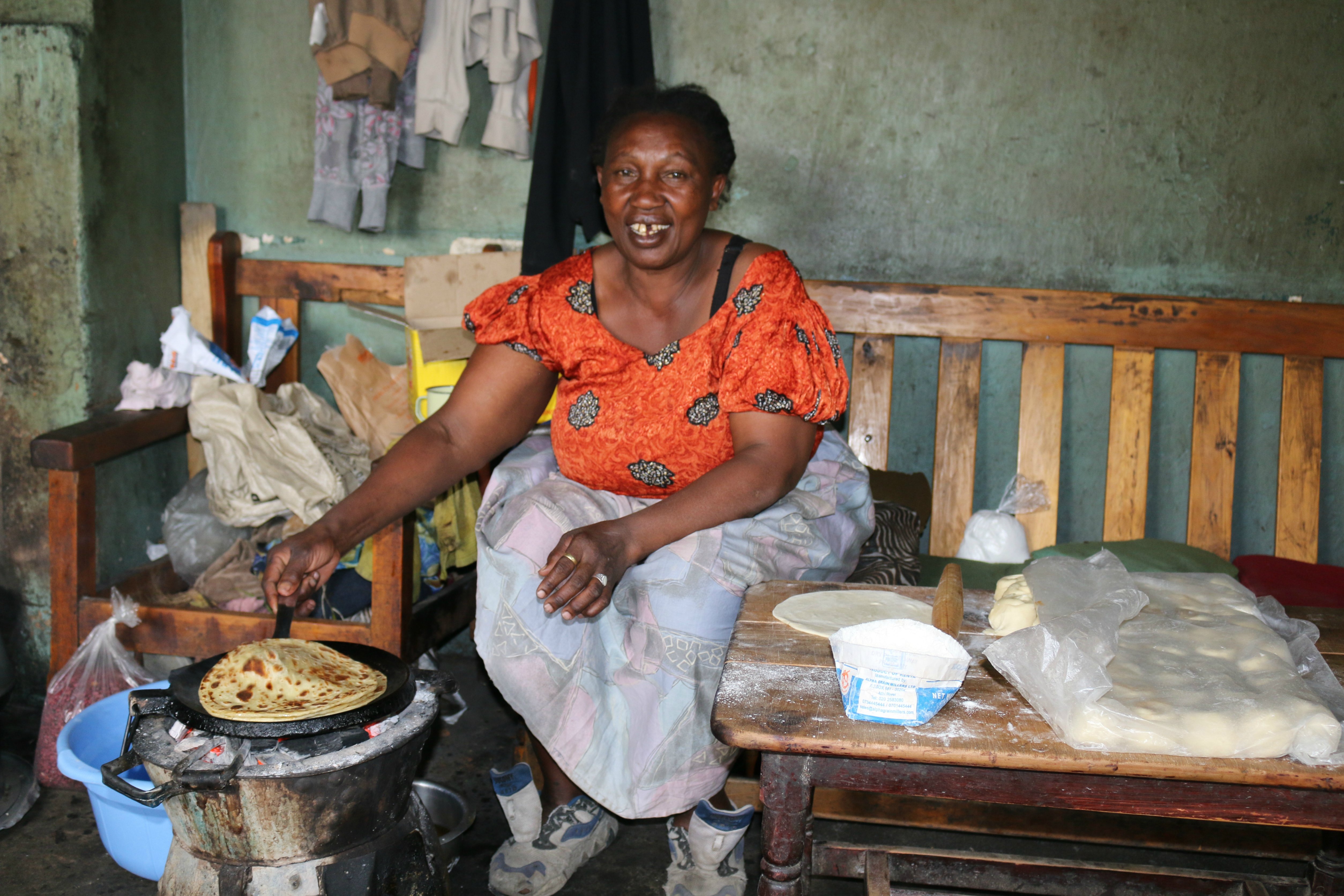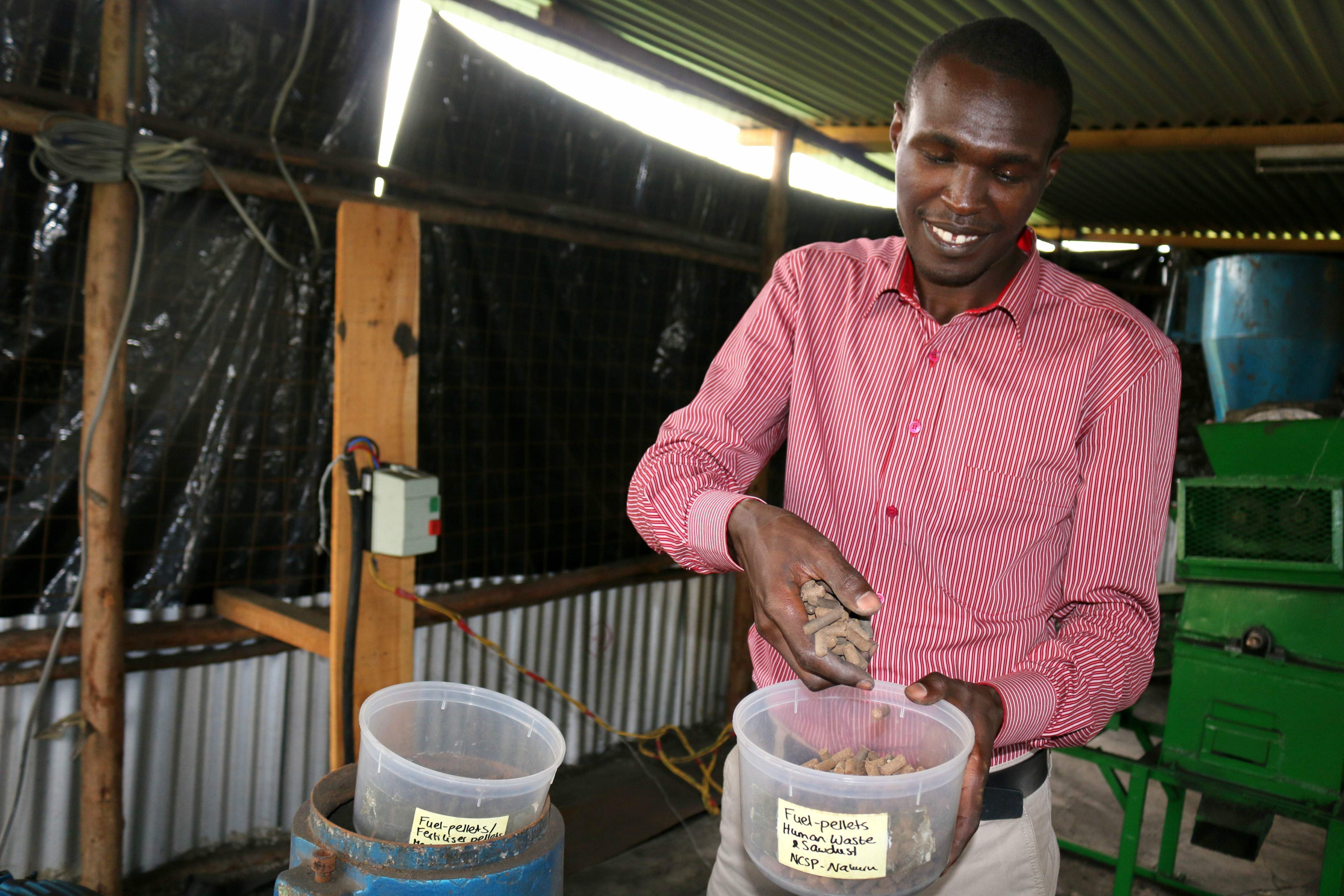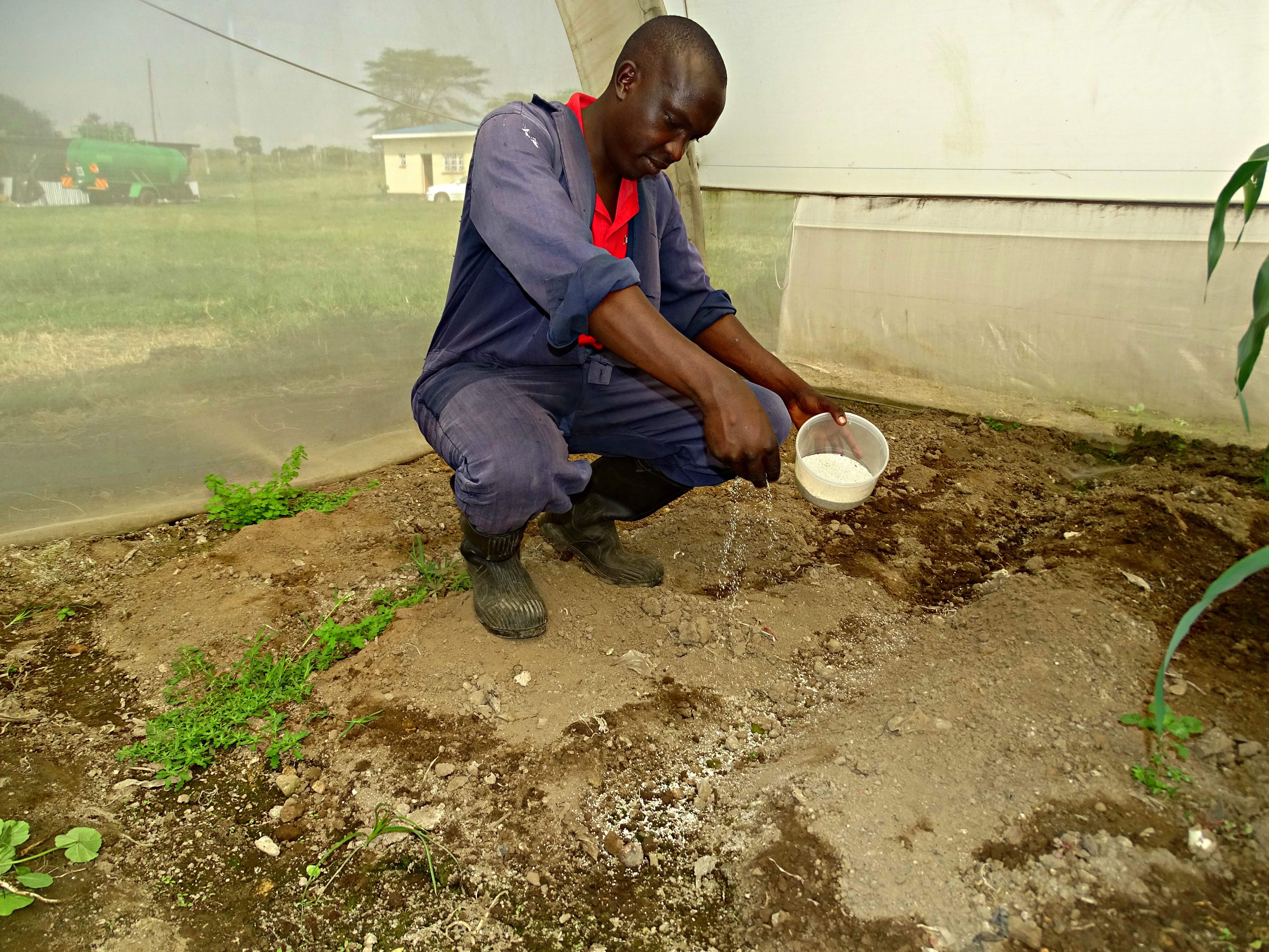A local youth group has been trained on how to safely remove the human waste that will become biofuel for cooking and heating.
Veronica Wanjiru tests the heat of the griddle on the traditional charcoal-fired grill or jiko in between browning batches of round flatbreads. The coals have to be hot to make the perfect chapati, but not too hot or the popular Kenyan staple will be dry and hard instead of soft and pliable.
Wanjiru (52) is a chef at Mama Tiffany’s hotel in Kivumbini Estate in Nakuru, Kenya’s fourth-largest city. She takes great care with hygiene when she cooks: not only will business suffer if anyone falls ill after eating her food, she knows that many people have died in the persistent cholera outbreak that has been plaguing Kenya since December 2014.
Kenya unearths the hidden power of poo and turns human waste into biofuel
[multimedia source=”http://bhekisisa.org/multimedia/2016-09-12-kenya-unearths-the-hidden-power-of-poo-and-turns-human-waste-into-biofuel”]
Since then, more than 15000 cases and at least 238 deaths have been reported nationally, according to a United Nations Children’s Fund overview published in May. Nakuru in the Rift Valley is one of 30 counties in Kenya affected by the outbreak. The US Centers for Disease Control recorded almost 400 cases and 17 deaths in Nakuru as of January.
When Wanjiru felt dizzy and weak at work, she thought it was because of the stifling heat in the kitchen. She cleaned the dishes and left.
“I barely got home when the diarrhoea started. I took medicine I bought from a chemist and started vomiting. My joints felt weak,” she recalls.
Her daughter rushed her to hospital, where she was diagnosed with cholera. Wanjiru says this saved her life.

Veronica Wanjiru credits her daughter’s quick thinking for saving her life after she contracted cholera. (Sophie Mbuguah, M&G)
Sickly sanitation system
Cholera is a diarrhoeal illness spread by food or water contaminated with faeces, and can kill within hours if left untreated, according to the World Health Organisation.
In Nakuru, gaining access to clean drinking water and sanitation is an ongoing battle. Just over half the growing population of 1.6-million people have access to adequate sanitation facilities, according to MajiData, an online database providing water and sanitation statistics from Kenya’s low-income urban areas. The website is run by partners such as Google and the UN Human Settlements Programme.
Of the county’s existing toilets, 51% are pit latrines that contaminate the groundwater with faecal sludge and urine, says Samuel Kingo’ori, Nakuru’s public health officer.
“For years, residents in the low-income areas have been emptying pit latrines into the storm water [drainage system] during the rainy season,” Kingo’ori explains. This contaminates the water sources and threatens the Lake Nakuru National Park ecosystems downstream, he says.
These problems are not limited the county’s slums, where a single pit latrine is often used by between 30 and 200 people.
Kivumbuni, a municipally managed estate established in the 1950s, used to be a popular area where “the paint was fresh” and “the taps never ran dry”.
Rosemary Nyambura (68), who has lived there since she was a teenager, recalls a time when the “lawns were mowed, trashcans emptied weekly and toilets cleaned three times a day, with the streets well lit and swept”.
Nyambura has seen the estate fall into disrepair as it struggled to cope with an influx of people. It has become a dumping site for litter, she says. “Streams meant to wash away rainwater are blocked by solid waste.”
Even here, public toilets are shared by too many people, Nyambura says.
Turning excrement into biofuel

Lawrence Kimaru demonstrates ready-to-use pellets of bio-fuels made from human waste as part of the project (Sophie Mbuguah, M&G)
Managing this human waste problem is expensive, but instead of spending money on it, the county wants to turn it into a profit-making business.
Human waste is being turned into biofuels and bio-fertilisers in a pilot project that aims to show how this practice can be profitable. Urine is being turned into fertiliser and faecal sludge into briquettes that are able to burn for longer than charcoal.
“We need to approach the use of waste resources as a business that can provide alternatives to fossil fuel,” Kingo’ori says.
The Nakuru sanitation programme was started in 2013 by the county government and is run by the Nakuru Water and Sanitation Services Company.
“We are going beyond having access to toilets, to addressing community hygiene and sanitation,” says Lawrence Kimaru, an adviser for the nonprofit SNV Netherlands Development Organisation, which supports the programme.
“This includes desludging pit latrines and rehabilitating toilets.”
More than 720 new toilets have been built and more than 4 000 toilets rehabilitated under the programme.
Cleaning up a dirty business

Human urine is also being turned into fertiliser, which is being tested on crops like maize, cabbage and potatoes. (Sophie Mbuguah, M&G)
The faecal sludge is collected by the Kalamaki Sanitation Group, which brings together 30 young people from low-income areas.
Peter Kariuki (35) used to earn a pittance working under the cover of night and risking arrest. Along with other young men from Manyani village, he would venture out each night with a bucket to empty pit latrines into shallow graves and streams.
“It was dirty, illegal and risky,” he admits, saying some of them were often under the influence of alcohol. “But someone had to do it.”
They have now been trained and given protective clothing, and are equipped with gulpers, or machines that hygienically empty pit latrines. The workers get paid up to 2800 Kenya shillings, or about $27, for every 2 500 litres of waste they take to the Nakuru sewage treatment plant.
At the plant, the sludge is dried and sanitised in a glass house heated to 250°. “This kills any possible anthrax infection,” Kimaru explains.
Chemicals are used to kill pathogens that can cause diseases. In a process that lasts about three days, it is then turned into carbonised, sausage-shaped briquettes or milled into fuel pellets.
These products are odourless and burn for longer than charcoal, according to Kimaru. They also make less smoke.
Human urine is turned into struvite, which is used to enrich the soil.
“Nakuru soil is very acidic and low-yielding. Struvite is a high-quality phosphorus fertiliser that contains significant levels of nitrogen, phosphorus and potassium,” Kimaru says.
Scientists working on the project have been conducting field trials, using the fertiliser on maize, cabbage and potato crops.
The struvite has been harvested from newly built school sanitation facilities that have urine compartments, which gather urine without faecal waste.
Although Wanjiru says she is keen to test the new fertiliser and will happily eat vegetables grown with it, she is not sure how her customers will react to her cooking with the briquettes.
It is mostly the “ick” factor that puts her off, she admits. “I will have to see it,” she laughs. “And smell it.”